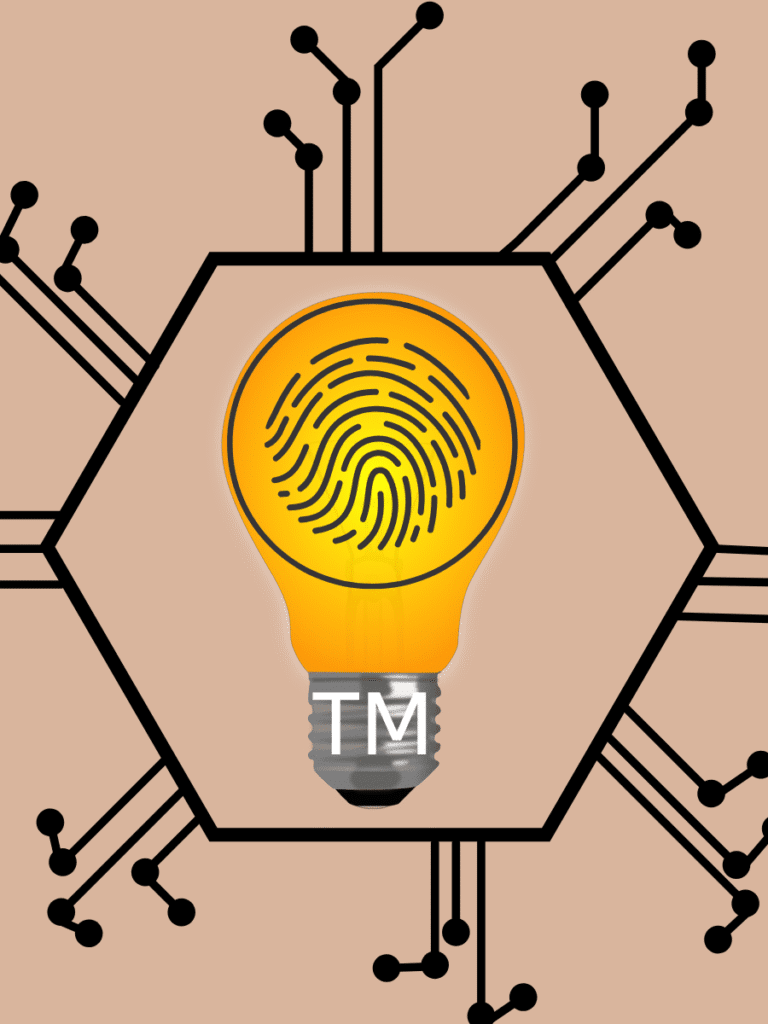Introduction
Trademarks function as a symbol of origin to build customer trust. It consists of distinct words, symbols or phrases, designs or combined elements that identify specific products or services in the market. What is a trademark is best understood through Section 2(1)(zb) of the Trade Marks Act, 1999, which defines a “trade mark” as a mark capable of being represented graphically and which is capable of distinguishing the goods or services of one person from those of others and may include the shape of goods, their packaging and combination of colours. A trademark system protects product brand identifiers and service marks from counterfeiting. It builds brand awareness during worldwide market expansion.
History of Trademarks
Trademark concepts existed for thousands of years, starting from ancient times. Artisans from ancient times used symbols to mark their products to show their point of origin and product quality standards. This occurred among potters in Egypt and Rome. The creation of formal trademark institutions happened after a significant time period passed.
- Middle Ages (13th-14th Century): Extensive use of distinctive signs for goods emerged during the prosperous Middle ages, primarily through the 13th and 14th centuries, for proving product quality through bell and paper watermarks. Manufacturers added marks to demonstrate their shop names, family identities, and geographical origins, specifically in textile products. The “Assize of Bread and Ale”, created by King Henry III in 1266, introduced bakery identification markings through signs for validating bakeries while ensuring consumer safety. The legal specialist Bartolo da Sassoferrato presented theoretical concepts about current insignia and coat of arms in his intellectual work ‘Tractatus de Insignis et Armis’. The Renaissance Italian guilds achieved effective trademark registration by publishing works such as “Marks and the Medici” and safeguarded the Florence metal smith’s registration book from the 14th century.
- Industrial Revolution (18th Century): An extensive rise in trademark usage occurred during the 18th-century Industrial Revolution when machine production and global trade expansion took place. Manufacturers adopted trademarks to mark their products because production levels were skyrocketing during that period. Records from history reveal that Stella Artois (1334) and Lowenbrau (1383) developed two trademarks that became among the lengthiest in existence. The increasing spread of global trade required specialized identification of creators, given the case of French goods sent to India from their original manufacturing point. In order to identify their completed products, specifically Paris-based furniture business owners had to apply identification marks. During our early years, trademark protections from United States jurisdiction began to develop. Samuel Breck applied for a federal trademark in 1791, but the authorities refused his application. The federal government delayed creating national legislation because multiple states had established trademark regulations prior to 1870.
- International Exhibitions (19th Century): Industrial advancement, railway technology, and steam propulsion ships functioned as accelerators, making international exhibitions more prominent throughout the 19th century. The Great Exhibition of 1851 in London and Universal Exhibition of 1855 in Paris operated as leading exhibition venues, which made ‘Louis Vuitton’ and ‘Patek Philippe’ and other brands famous worldwide. During this period, the exhibitions helped ‘Baccarat’ and ‘Hermes’ and ‘Swiss-watchmakers’ further brand recognition, allowing them to receive prestigious awards and strengthen their regional influence. Austria took several quick-time protective steps to safeguard, foreign exhibition concepts displayed at the 1873 Vienna World Exposition.
- International Cooperation:
- Vienna Congress (1873): Recognized the inadequacy of bilateral treaties and the need for multilateral industrial property cooperation.
- Paris Universal Exhibition (1878): The exhibition recommended standardized legislation for industrial property rights.
- The Paris Convention (1883): It presented the first essential international framework for IP and provided equal treatment.
- Legacy: Enabled the creation of the Madrid Agreement (1891) for international trademark registration.
Types of Trademarks
For effective operations, businesses must acquire exclusive markers, through TM’s to distinguish their products from market competitors. The main types include:
- Word Marks – Consisting solely of words, letters, or numbers in standard typography (e.g., ADIDAS, PHILIPS, LEVI’S).
- Figurative Marks – Contains both text and graphics with text and design elements (e.g., Adidas logo and the combination of GORETEX image and Plastic fragment).
- Shape Marks – Three-dimensional product manufacturer signs (“Toblerone” packaging design, plastic water bottle and battery styles)
- Position Marks – Protection under TM position marks in specific positions (zero).
- Pattern Marks – It reveals its recognition through items organized in defined designs.
- Color Marks – Consists of one or several specific colours.
- Sound Marks – Pure sounds and their harmonic melodic combinations.
- Motion Marks – Featuring a movement or change in the position.
- Multimedia Marks – The combination of sound tracks and images in Multimedia Marks.
- Hologram Marks – Containing holographic characteristics for a dynamic visual effect.
The trademark family contains supplementary marks also, which are:
- Device Marks – Includes logos, symbols and distinctive designs (eg., Apple’s bitten apple symbol).
- Service Marks – Identification of services instead of products (eg., FedEx serving).
- Collective Marks – Membership symbols and quality attributes (eg., Indian Chartered Accountant CA mark).
- Certification Marks – Verify compliance with quality or origin standards (e.g., ISI mark for Indian Standards Institute certification).
- Non-Conventional Marks – Due to their distinctive characteristics, there is difficulty during trademark registration of non-conventional marks such as scents, textures and holograms.
Why are Trademarks necessary?
Organizational brands benefit from registered trademarks to distinctly separate their brands and products from competitive market items. An essential operational benefits that come from registering a TM :
- Results in the brand gaining approved status, yet it protects its market worth.
- Grants complete power to apply the product identity on an exclusive basis.
- Allows businesses to demonstrate their unique market position regarding their products and services against their market competitors.
Who can apply for a Trademark?
- Individuals
- Joint Owners
- Proprietorship Firms
- Partnership Firms
- Limited Liability Partnerships (LLPs)
- Indian Companies
- Foreign companies
- Trusts/Societies
What process should be followed to register a trademark in India?
Multiple steps in India’s trademark registration framework serve to safeguard the legal rights of brand identities. Here is their simplified guide –
- Search – The IP India website enables us to determine the uniqueness of the TM.
- Application – Users can submit their applications online through the TM e-Filing Portal.
- Examination – During this stage, the Registrar verifies the application while searching for any legitimate objections.
- Publication – Following acceptance of the TM application, it becomes accessible in the TM Journal for possible objections.
- Registration – Obtaining the registration certificate becomes possible following the expiration without any objections detected.
The trademark registration process takes 6 months to one year, and once registered, the owner receives valid rights, which expire after 10 years.
Territorial Jurisdiction for Trademark Registration
It is important to know that TM registration in India is territorial, which means that the protection is available only to the territory within which the TM is registered. Jurisdiction determines which TM-office is appropriate, depending on the applicant’s business operations and place of residence. Cases under Section 134 of the Trade Marks Act, 1999 can be filed by proprietors in District Court falling having jurisdiction over their business irrespective of the place where they work for gain, where the goods are sold or in the area where they voluntarily reside.
TM’s must be be registered separately in all nations for global assurance. The Madrid Protocol, (1989) allows people to register their mark in more than 120 countries.
What is new in Trademarks?
- Digital Trademarks and NFTs- NFTs have changed the game for branding and marketing, allowing businesses to sell digital assets while ensuring authenticity through blockchain technology. Luxury brands like Gucci and Louis Vuitton use NFTs to create virtual collections and secure automatic royalties. However, challenges exist, such as unauthorized trademark use, evident in Hermes’s lawsuit against the “MetaBirkin” NFTs. To protect their trademarks in the digital world, companies must register under the Nice Classification and watch NFT platforms for misuse. As we move forward, legal frameworks will keep evolving to balance innovation
- AI in Trademark Examination- Artificial intelligence transforms trademark watching with instant accuracy results and operations so efficiently that they can produce more goods or services. Natural language processing and machine learning address issues unearthed by language and culture variation in data processing. This combined application of AI systems enable current trademark processes to finally find conceptual trademark matches, not only phonetic and visual, based on ideal compare profiles. However, we continue to face challenges such as data bias, a lack of transparency, and legal needs that need to be revised. Through AI technology, brand protection improves because copyright statutes are transformed into operational enforcement systems in real-time.
- Stricter Enforcement Against Counterfeiting – This AI helps monitor trademarks’ work by keeping protective safety mechanisms running optimally. Finally, TM-protection processes are automatically checked and can instantly alarm over TM-infringement.
- Automatic Monitoring and Reporting of unauthorized TM usage on diverse digital channels.
- Continuous on-line monitoring
- Comprehensive Analysis Reports automatically implement the enforcement process with a lower human cost.
- Simplified Madrid Protocol Access– The Madrid Protocol, which WIPO manages, permits trademark owners to obtain protection in several countries from a single application; it includes 108 members from 124 countries.
Key Features of Simplified Madrid Protocol
- Single Application and Specification – One filing, a single application in one language and one currency with a set of fees simplifies filing.
- Pre-Condition Of Application- TM-Owner must have a national registration.
- Examination - WIPO issues international registration, but each designated country examines it based on its own TM-laws.
- Continuation – Owners can extend the protection for other member countries after the initial registration.
- Registration Management – Renewal renewals (valid for 10 years) and changes in the holder may be recorded via WIPO.
- Post-deadline dependent period in which international registration and extensions are lapsed, but that owner could turn the extensions into a national application but maintain the filing date (5 years).
Non-Conventional Marks Recognition
India’s trademark law recognizes some unconventional trademarks in two categories –
- Recognized Unconventional Trademarks:
- Shape of Goods Marks: eg., The Coca-Cola bottle or Carlsberg beer bottle.
- Sound Marks: Requires musical notation and a sound clip up to 30 seconds (eg., Yahoo’s three-note yodel and Nokia’s default ringtone).
- Colour Marks: These can be registered if they have acquired distinctiveness or secondary meaning (eg., Victorinox’s maroon color and Deutsche Bank’s pink color).
- Motion Marks: These are not explicitly recognized but can be registered as device TMs depicting motion (eg., Nokia’s “Connecting Hands”).
- Unrecognized Unconventional Trademarks:
- Smell Marks: Due to the demand for graphical representation, smell marks are challenging to register.
- Taste Marks: Similarly, smell and taste marks are also difficult to register.
- Touch/Texture Marks: As of right now, touch/texture marks are not graphically portrayed, which makes registration unlikely.
- Hologram Marks: Registration is difficult due to difficulty in 2D representation.
Conclusion
Digital trademarks and NFTs have brought significant transformative changes to branding and intellectual property requirements, which now influence the registration of trademarks in India. Improved enforcement efforts for identifying counterfeits and improved mark matching are the results of using artificial intelligence in trademark analysis. The Madrid Protocol helps international growing businesses simplify their international trademark registrations. Mark owners can efficiently monitor shape and sound marks with color marks, yet hologram and smell marks remain challenging to record. The new market developments demand business modifications that preserve competitive positions while protecting intellectual property rights.
References
- Tardi C, Rasure E and Kwilhaug S (2024). “Trademark: Definition, What It Protects, Symbols & Examples”. Investopedia, available at https://www.investopedia.com/terms/t/trademark.asp.
- USPTO. https://www.uspto.gov/trademarks/basics/what-trademark
- WIPOD – International Trademark System Talks: Transcript of Episode 1. “A History of Trademarks: From the Ancient World to the 19th Century”. https://www.wipo.int/en/web/podcasts/madrid/transcripts/international_trademark_system_talk_01
- EUIPO. https://www.euipo.europa.eu/en/trade-marks/before-applying/full-list-of-trade-marks
- Intellectual Property: The Law of Trademarks, Copyrights, Patents, and Tradesecrets. Fourth Edition. WordPress. https://mitmecsept.wordpress.com/wp-content/uploads/2018/10/deborah_e-_bouchoux_intellectual_property_the_lbookzz-org.pdf
- Kotiyal K (2024). “What is a Trademark? Meaning, Types & Importance”https://www.herofincorp.com/blog/what-is-a-trademark
- India Filings. https://www.indiafilings.com/learn/who-is-eligible-for-trademark/
- Trademark Registration Process Flowchart (2025), https://tax2win.in/guide/trademark-registration-process-flowchart
- Arevalo S. “Trademarks and NFTs: New Challenges and Opportunities for Intellectual Property”.
- Consortium legal. https://consortiumlegal.com/en/2024/09/24/trademarks-and-nfts-new-challenges-and-opportunities-for-intellectual-property/
- Pathak A H and Chowbe A S (2025). “Critical analysis af AI’s impact on Trademark examination and its role in preventing the registration of Deceptively Similar Marks in India”.Seejph. 25(S1) : 2197-5248 https://seejph.com/index.php/seejph/article/view/4103/2705
- Petrova I. “Harnessing the Power of AI in Trademark Enforcement” https://www.evalueserve.com/blog/harnessing-the-power-of-ai-in-trademark-enforcement
- USPTO (Madrid Protocol) https://www.uspto.gov/ip-policy/trademark-policy/madrid-system-international-registration-marks-madrid-protocol
- Sarda R and Shahi S (2021). “Unconventional trademarks: A roadmap to the future” https://www.lakshmisri.com/insights/articles/unconventional-trademarks-a-roadmap-to-the-future#







